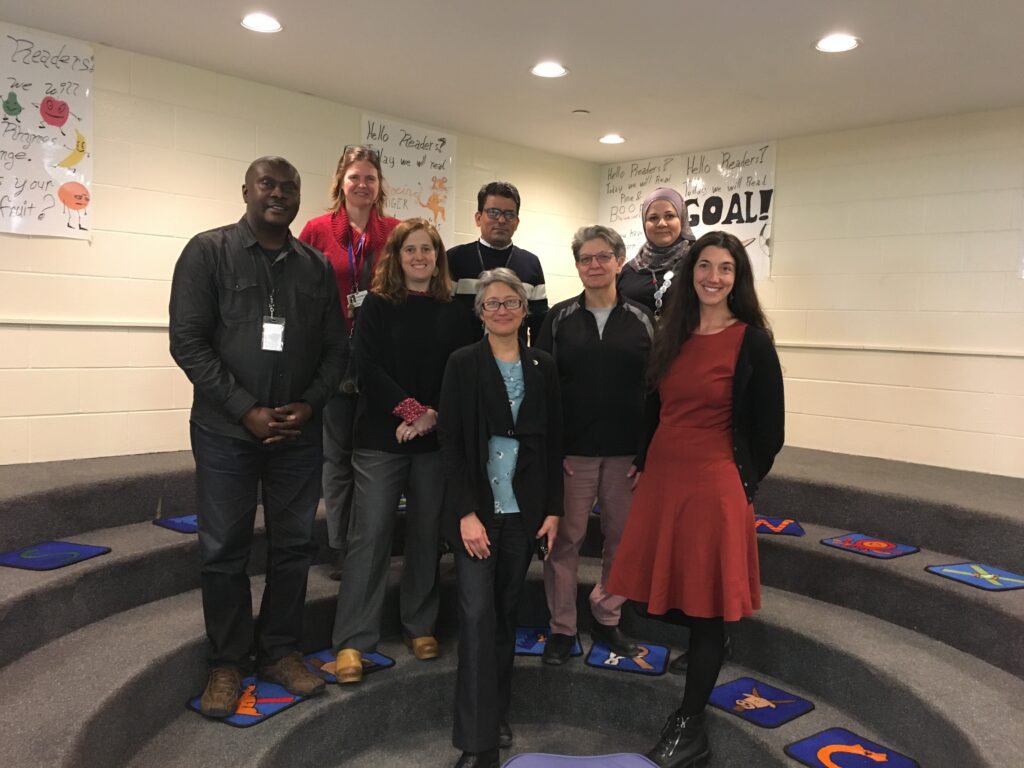Project RAFT is the result of a collaborative research project spanning three years. We, Cynthia Reyes and Shana Haines, are faculty at the University of Vermont in the College of Education and Social Sciences. In partnering on our UVM educational minor program, Education for Cultural and Linguistic Diversity (ECLD), we engaged with community members who expressed an interest in understanding the nuances of how families with refugee backgrounds and their children’s teachers collaborated to support their children/students’ success. We ended up creating a robust multi-year qualitative research study that included hundreds of interviews with family members, teachers, liaisons, students, and administrators. A fantastic group of diverse researchers and administrators worked together on this project, which made it even more powerful for all involved.
One of the major findings of our research was that teachers and families wanted to work together to support students but, for the 32 families involved in the study, a variety of obstacles impeded the formation of true partnerships. Both teachers and families expressed that they did not really know the other. They expressed that there were limited opportunities to create relationships. This got us thinking… how could opportunities for building relationships between refugee families and their children’s teachers be created? Our research also resulted in a list of impeding factors, including time, scheduling barriers, availability of liaisons/interpreters, technology as a barrier, and stress.
We convened some of our partners- Miriam Ehtesham-Cating from BSD and Kirsten Kollgaard from WSD- and brainstormed how we could design an activity that would be build relationships AND be feasible. We started by reading Hughes (2013) article on using the Tree of Life intervention as well as a Haines, Shepherd, Francis, Mabika, & Ziegler (2017) article on using a modified McGill Action Planning System to increase family-professional partnerships.
We all liked both of these techniques, and decided that the resulting technique must be:
- Appreciative
- Voluntary
- Student-centered
- Take place in less than 1 hour
- Not result in a to-do list
Project RAFT
We applied for and secured seed funding from the Braitmayer Foundation and the College of Education and Social Services due to the strong interest within the educational communities or Burlington and Winooski. Our first step was to assemble an Advisory Panel. This Panel, comprised of EL teachers, home-school liaisons, administrators, community members, and researchers met five times: September, November, January, March, and May. The purpose of this Panel was to conceptualize the intervention and react to data as we collected and shared it at our meetings.

*Missing from photo: Kirsten Kollgaard, ELizabeth Wood, Beth Evans, Krishna Bandari, Anna Viets, Maeve Poleman, Kaila Carson, Jordan Kerr, Rachel Hurwitz, Arby Ghemari, others who attended one Panel meeting
We started implementing RAFT in Winooski, with 3 EL teachers, 2 liaisons, and 3 families, in November. Cynthia and I met with each liaison, teacher, and family separately to teach them about RAFT as well as gain an understanding of the relationships that already existed. We then implemented RAFT with each family/teacher/liaison together (3 meetings). We then interviewed all participants about their experiences. We took those data back to the Advisory Panel and asked for their input. We ended up modifying the tool and process accordingly. One major shift was the desire to include homeroom teachers for students who were not in newcomer or self-contained classrooms. We then implemented RAFT a second time, with the same teachers but different liaisons and different families/students. We once again conducted the trainings and pre- and post-interviews. We brought these data back to the Advisory Panel. For the final round of RAFT implementation, we expanded to Burlington. We conducted RAFT with the same 3 Winooski teachers, other teachers who work with those students, three new families, and the home-school liaisons who work with them. We also conducted RAFT with 3 Burlington teachers, families, liaisons, and students.
The tool you can explore on the following pages is the result of the refinement of these three waves of implementation. On the following pages, you will see the protocol we used as well as the trainings we conducted. We are currently analyzing the results of the project, and we plan to write papers and other academic presentations in the months to come. Those will all be posted here as well, in due time.
© Haines and Reyes, 2019